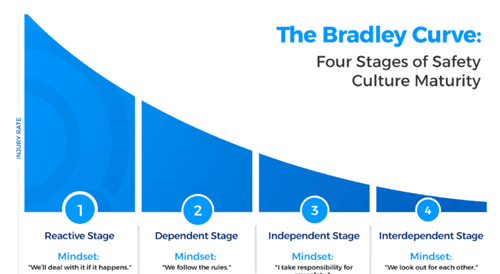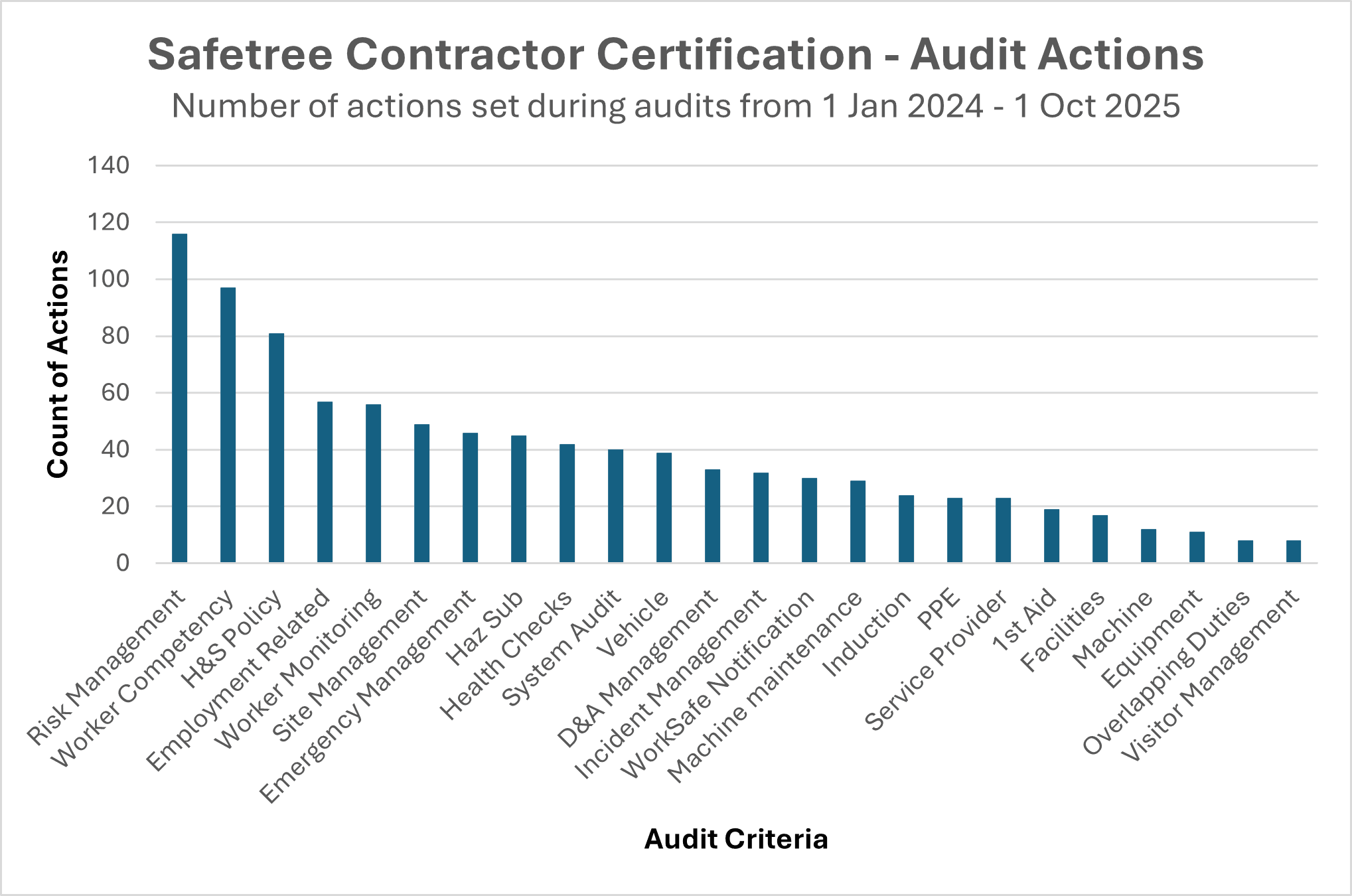Evolving our work practices
In this newsletter:
• Joe's blog
• Safetree Contractor Certification - Corrective Action Trends
• Final ACoP Workshops
• Recent extreme weather in the South Island
• FENZ Incident Reports
• ACC Recovery at Work trial continues
• Banner Controlled Felling Zones
• Fatigue management trial boosts safety and efficiency in log transport
Joe's blog
FISC recently received a report from Worksafe – Workforce Insights Programme: Employers and Workers.
WorkSafe commissioned a series of research reports on workers and employers to help track health and safety performance over time.
The employers and workers report examines employer health and safety maturity; worker engagement, participation, and representation; and the impact of workplace safety culture.
Some of the Key findings were:
The survey shows overall improvements in New Zealand’s work health and safety cultures, compared to 2023.
- More workplaces now have shared responsibility for health and safety with workers.
Employers and workers report more formal worker engagement processes. - 74% of the workers surveyed are satisfied with how employers respond to health and safety issues when raised.
- Both employers and workers are also getting better at health and safety training and education.
- While risk management processes are common, there are opportunities to address significant gaps.
77% of employers made changes in the last 12 months to improve health and safety.
Forestry employers are most likely to prioritise health and safety, and implement robust practices.
You can see this report here - it has many encouraging insights about forestry and other industries. Against most of the research elements, forestry is making positive improvements, but there is still plenty of headroom to improve.
I was reflecting on this report and couldn’t help but note our current transition to the new ACoP as a tangible example of how our work practices can evolve.
One of the most significant changes in the new ACoP is the shift in tone. The new ACoP is less prescriptive. It has a strong focus on identification of hazards and risks, assessment of those risks and development, implementation and monitoring of controls.
This approach provides latitude for continuous improvement. Contractors and others should see this as encouragement to monitor and evolve their practices, so long as they meet or exceed the ACoP standard.
Thinking about both the report and the how the sector has responded to the new ACoP, one can’t help but think about how we are evolving as an industry.
There is a simple framework called the Bradley Curve, it was developed to assess the stages of maturity of a safety culture. Simply, the stages are:
- Stage 1 Reactive: Safety efforts are reactive and minimal and accidents are common.
- Stage 2 Dependent: Compliance driven, follow the rules to avoid punishment.
- Stage 3 Independent: Everybody takes personal responsibility for safety. A pro-active approach to risk mitigation.
- Stage 4 Interdependent: A strong safety culture built on collaboration and communication. Strong continuous improvement and employees care for their own and other’s safety.
This framework is applied to a single organisation, but if you were to consider the sector as a whole, where do you think we would sit on the curve? Are we maturing as a sector?
We certainly see evidence of strong compliance cultures, which is not surprising given our poor safety performance prior to the independent review. However, we also see higher levels of engagement and investment in continuous improvement and innovation.
I see a strong aspiration that the sector wants to be better, and an understanding that if we are to move to higher levels of safety culture, we need to do this together - a rising tide lifts all waka.

Safetree Contractor Certification - Corrective Action Trends
National Safetree Certification Manager Mark Preece has conducted some trend analysis within Safetree Contractor Certification Audit Outcomes. The graph above summarises the areas where contractors did not meet the standard during Contractor Certification audits for the period 1 January 2024 to 1 October 2025.
During this period there were 238 audits completed with 129 of these (54%) requiring follow up on actions before certification was awarded.
The top five issues leading to a ‘Not Met’ standard, and therefore actions assigned to the contractor for follow up, are summarised below:
- Risk Management – Identification and management of critical risk not understood by all workers. Process for identifying and managing risks not well documented. Risk (Hazard) register out of date.
- Worker Competency – Competency matrix and/or training records not available. Competency matrix needs to be updated.
- H&S Policy – Crew not aware of H&S policy and goals. H&S policy requires review.
- Employment Related – Example of an employment agreement not available. Evidence required that minimum wage is being met.
- Worker Monitoring – Evidence not available that SBOs have taken place.
A Safetree Certification Auditor Workshop is happening on 18-19 November, where these findings will be discusse in more detail. For more information contact Mark Preece - mark.preece@fisc.org.nz

Final ACoP Workshops
WorkSafe has been running a series of workshops about the new Approved Code of Practice (ACoP). Upcoming workshop dates are listed below:
Napier - 18 November 2025
Palmerston North - 20 November 2025
Email info@safetree.nz for more information
Recent extreme weather in the South Island
A shout out to the areas in the South Island where recent extreme weather has resulted in extensive damage and large areas of windthrow.
We are sure there will be shared objectives across the affected plantations of:
• Optimising recovery
• Doing it safely
You can access some useful resources on windthrow recovery here.
Incident Reports - Fire and Emergency NZ
Fire and Emergency New Zealand (FENZ) issued a series of updates on 23 October following the outbreak of several significant wildfires. It was a timely reminder of the heightened fire danger as dry, windy conditions persist across several regions.
FENZ is urging landowners, contractors, and forestry operators to:
- Delay outdoor burning and any spark-producing work
- Review fire preparedness plans and ensure suppression equipment is ready
- Stay alert to local fire danger ratings and FENZ advisories.
Even small ignitions can escalate rapidly under the current conditions. Forestry operators are advised to exercise extreme caution until weather patterns ease.
Download the FENZ update issued 23 October 2025
Incident report data from the last seven days is publicly available Fire Emergency New Zealand. The data supplied is an extract from the ICAD reporting system maintained by Fire and Emergency New Zealand. Reporting includes live fire incidents, non-fire weather related incidents, regional coordination centres in operation, incident-relates road closures, red weather warnings, fire prohibition notices and other warnings and disruptions.
View the latest incident reports here
ACC Recovery at Work trial continues
The next Recovery at Work webinar, led by ACC’s Sue McMaster, is coming up on November 26th.
If your business is interested in learning more about integrating work as an active part of an employee’s recovery and rehabilitation, to help them get better, sooner, and have a positive impact on their mental wellbeing and your workplace, reach out to Jackie at Safetree on info@safetree.nz, or read more at the link below.
WATCH: Banner-Controlled Felling Zones
Manulife Forest Management Limited (MFM NZ) national distribution manager Laresia Heke and her team have created a short training video on banner-controlled felling zones.
The video demonstrates the correct process for trucks and other vehicles to follow when travelling through a banner-controlled felling zone on forest roads.
MFM (NZ) distribution supervisor, Quintin Makene, is featured behind the wheel, with the truck kindly provided by Campbell Gilmour from Gilmour Transport Limited. Laresia says that the video will form part of MFM (NZ)'s online forest induction that all forest permit holders must complete and will be added to their website.
The aim of this resource is to support training and help reduce breaches of banner protocols and processes that may occur on forestry roads. The NZFOA encourage you to take a look and share it with your teams and log transport networks.
Fatigue management trial boosts safety and efficiency in log transport
FOA reports that the Advanced Fatigue Management Scheme (AFMS) trials have gained traction across the trucking sector and are beginning to show tangible operational and safety benefits for the forest industry.
The Log Transport Safety Council (LTSC) Log Transport AFMS trial has included approximately 520 drivers across seven companies, with two further companies having applied.
In aggregate, around 500 of New Zealand’s approximately 2,500 log trucks are now operating under the AFMS, signalling a notable shift in how driving hours and rest breaks are being managed.
Participation in the Log Transport AMFS requires alignment with controls implemented by the LTSC intended to protect safety and compliance.
Operators must:
- Hold LTSC contractor certification at levels four or five
- Use electronic logbooks rather than paper records
- Install and operate fatigue cameras
- Maintain a documented fatigue management plan (which will be audited by the Waka Kotahi - New Zealand Transport Agency (NZTA))
- Accept operator audits from NZTA covering Certificate of Fitness, workhours and permits
These conditions ensure the Log Transport AFMS is implemented and managed under consistent standards rather than as an ad-hoc relaxation of rules.